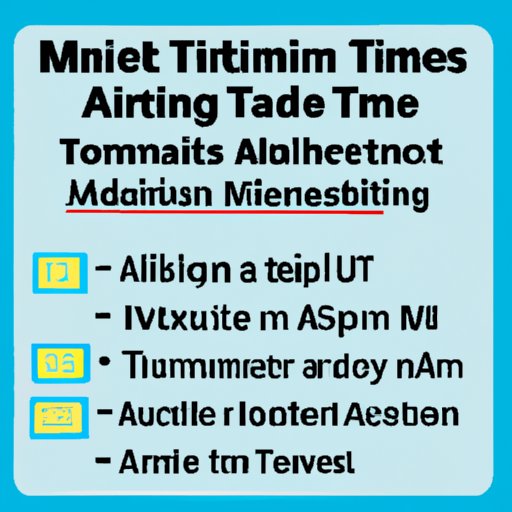
I. Introduction
ATMs are an essential part of our daily lives and are conveniently located in various places, including at home or work locations. It is inevitable that as we use ATMs, we may need to deposit cash at some point. Depositing cash via ATM is simple and convenient, but there are limits to how much we can deposit. In this article, we will provide a comprehensive guide on how much you can deposit in an ATM and strategies for making larger deposits with ease.
II. Maximizing Your Deposits: Understanding ATM Limits
ATM deposit limits are the maximum amounts of cash or checks that account holders can deposit into ATMs. These limits vary depending on the financial institution and differ for each account holder. Understanding these limits is essential to avoid potential fees or having your deposit rejected.
ATM deposit limits are in place for various reasons, including protecting customers and banks from fraud and theft. Deposits that exceed the limits may be flagged due to the potential risk of fraudulent activity. Exceeding the ATM deposit limit can also cause the machine to malfunction and cause inconvenience to other bank customers.
III. Breaking Down the Limits: How Much Can You Deposit Using an ATM
The maximum amount you can deposit at an ATM varies from bank to bank. The exact amount usually depends on the type of account you have and your banking history. Typically, an ATM will accept up to 50 bills or up to 30 checks at a time. However, some ATMs may limit deposits to 10 bills at a time.
Most financial institutions also have daily, weekly, and monthly deposit limits. The daily limit is the maximum amount you can deposit in a day, the weekly limit is the maximum amount you can deposit in a week, and the monthly limit is the maximum amount you can deposit in a month. These limits can range from $500 to $30,000, depending on your bank and account type.
IV. A Guide to ATM Deposits: What You Need to Know About Deposit Limits
To make a successful ATM deposit, you need to follow the following steps:
- Insert your debit or ATM card into the designated slot and follow the prompts on the screen to enter your PIN.
- Select the “Deposit” option from the menu and choose the account you want to deposit the funds into.
- Insert the cash or checks into the designated slot and confirm the total amount.
- Wait for the ATM to register the deposit, which may take a few minutes, and then collect your receipt.
Factors that may affect ATM deposit limits include your account history, the amount of funds you have in your account, and the type of ATM you are using. Some banks also offer higher deposit limits for certain types of accounts such as premier checking accounts or business accounts.
V. The Dos and Don’ts of ATM Deposits: Staying Within Your Limits
Here are some useful tips for staying within your ATM deposit limits:
- Plan ahead and estimate how much cash or checks you need to deposit.
- Split larger deposits into smaller transactions instead of trying to deposit everything at once.
- Make deposits during business hours when possible, and use the bank’s drive-through if available.
- Avoid depositing large amounts of cash or checks as it may cause the ATM to malfunction.
Common mistakes to avoid include double-checking the total amount, ensuring that your checks are endorsed properly, and only depositing cash that is in good condition.
It is crucial to stay within your ATM deposit limits to avoid potential fees and rejected deposits. Exceeding your deposit limits can also lead to your account being flagged for suspicious activity.
VI. The Truth About ATM Deposit Limits: Dispelling Common Myths
There are various misconceptions about ATM deposit limits, with some people believing that ATM deposit limits do not apply to cash deposits made at bank branches. However, this is not the case, as both ATM deposits and bank branch deposits have limitations.
Others may believe that there are no limits to deposits made at ATMs, or that these limits only apply to deposits made at other banks’ ATMs. It’s important to note that these myths are false, and ATM deposit limits apply to all ATM deposits, regardless of which bank you use.
VII. Strategies for Large Cash Deposits: Navigating ATM Limits
If you need to deposit a large amount of cash, consider breaking the deposit into smaller amounts and depositing them over a few days to avoid exceeding the daily deposit limit. Alternatively, you could use multiple ATMs with higher deposit limits or make a deposit at the bank branch to avoid exceeding ATM deposit limits.

VIII. Mastering ATM Limits: Tips and Tricks for Depositing with Ease
General tips for using ATMs include:
- Using ATMs in well-lit and crowded areas to avoid potential theft.
- Examining the ATM card slot and keypad before use to ensure that no skimming devices are attached.
- Keeping your card and PIN information safe and confidential to avoid fraud.
You can also optimize your use of ATMs by choosing the right location, familiarizing yourself with your bank’s policies and limits, and using your bank’s mobile app to check your account balance before making a deposit.
IX. Conclusion
In conclusion, understanding ATM deposit limits is crucial to avoid rejected deposits, potential fees, and account suspension or cancellation. By following the tips and strategies, you can avoid exceeding your deposit limits and ensure that your transactions go smoothly. Remember to check with your bank regarding your account’s specific deposit limits and plan your deposits accordingly.
Call to action: Check your bank’s ATM deposit limits and plan your deposits accordingly.





